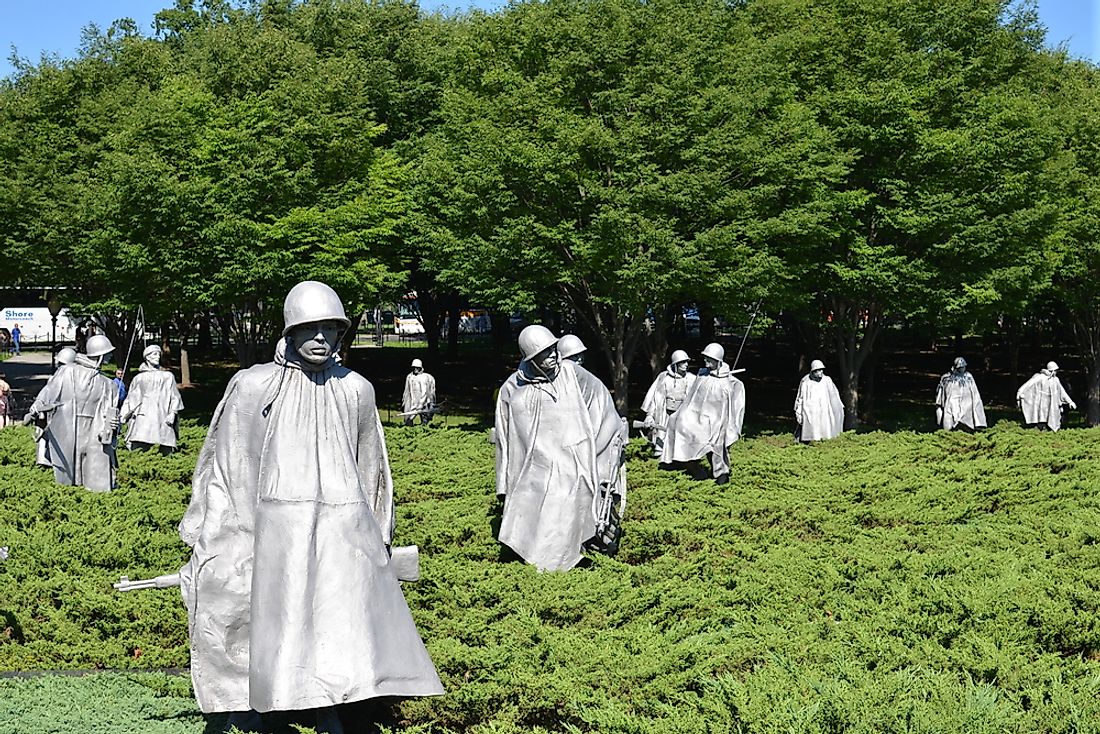Battle Of Outpost Harry - Important Battles Throughout History

5. Background
The Battle of Outpost Harry, lasting from June 10th to June 18th, 1953, was one of the last engagements of the Korean War. Outpost Harry was a small artillery observation post, located at the top of a hill in the vital ‘Iron Triangle’. The Iron Triangle was an area commanding the approach to Seoul, and consequently, it was heavily fortified by the UN forces. Harry was one of the UN's most important observation posts in the area, as it allowed the UN forces to view and call accurate artillery strikes against the Chinese Army. To eliminate this threat, the Chinese planned an attack to capture Harry, and use it against the UN's Main Line of Resistance, to seize more ground before the armistice talks were adjourned.
4. Makeup of the Forces
The battle involved elements of the US Army 3rd Infantry Division, supported by a Greek Expeditionary Forces Battalion. The Americans were commanded by Major General George Smythe, who was tasked with preserving the string of outposts, which protected the UN's main line of resistance in the area, from Chinese's observation and fire. Outpost Harry was only big enough to harbor a single company, so the Americans constantly alternated units in and out of Harry to allow them to rest and replace lost casualties. The task of capturing Outpost Harry fell on General Xiao Xuanjin, who commanded the Chinese 74th Infantry Division in the area.
3. Description of the Engagement
To capture Harry, the Chinese relied on a frightening variety of artillery fire, utilizing everything from mortars to howitzers. They simply planned to shell the undermanned outpost and soften the defenses covering the approach to the summit of the hill. Meanwhile, the Americans used a series of interlocking fields of fire, pre-arranged artillery, barbed wire, and mines to cover the perimeter of their outpost. After the battle started, it quickly developed into a rhythmic sequence in which both sides would mutually bombard each other during the day, while the Chinese would launch additional infantry attacks during the nighttime hours.
2. Outcome
On the night of June 10th, the Chinese attacked Harry with an entire regiment. Starting the night with the intention of overwhelming the single company defending it, they were surprisingly repulsed after hours of heavy fighting. The next day, the Americans reinforced the outpost and pulled back what was left of the K Company, who had valiantly defended it. They also deployed tanks into the valley east of Harry, so as to redirect the Chinese attacks towards the ‘Kill-Zone’ of the American artillery fire. The Chinese kept bombarding during the days and attacking during the night but, despite their numerical superiority, the Americans' firepower proved too strong to overcome. On June 18th, they called off the attacks, having suffered over 5,000 casualties, while the UN casualties amounted to 699 killed, wounded, or missing.
1. Historical Significance and Legacy
The battle at Outpost Harry was a typical engagement for the last year of the Korean War, a phase that was characterized by bloody see-saw battles over features of terrain that didn't translate into significant military advantages for the occupiers, other than a limited command over the surrounding terrain and an extra bargaining chip on the armistice negotiating table. Only a month after the bloody battle at Outpost Harry had ended, both sides agreed to a ceasefire at Panmunjom, with Outpost Harry and the rest of the defenses of the Iron Triangle passing into North Korean hands. For their valor at Outpost Harry, 5 units received Presidential Unit Citations, the most at a single time in U.S. military history. These units included 4 from the U.S. Army, namely Companies A, B, and K of the 15th Infantry Regiment of the 3rd U.S. Infantry Division, and Company F of the 65th Infantry Regiment form the same (3rd ) U.S. Army Infantry Division. The final recipient was the P Company of the Greek Expeditionary Forces Battalion. The Greeks’ name for the engagement was derived from Charon, who in Greek mythology was the ferry captain who took passengers between earth and the underworld over the rivers Acheron and Styx.











